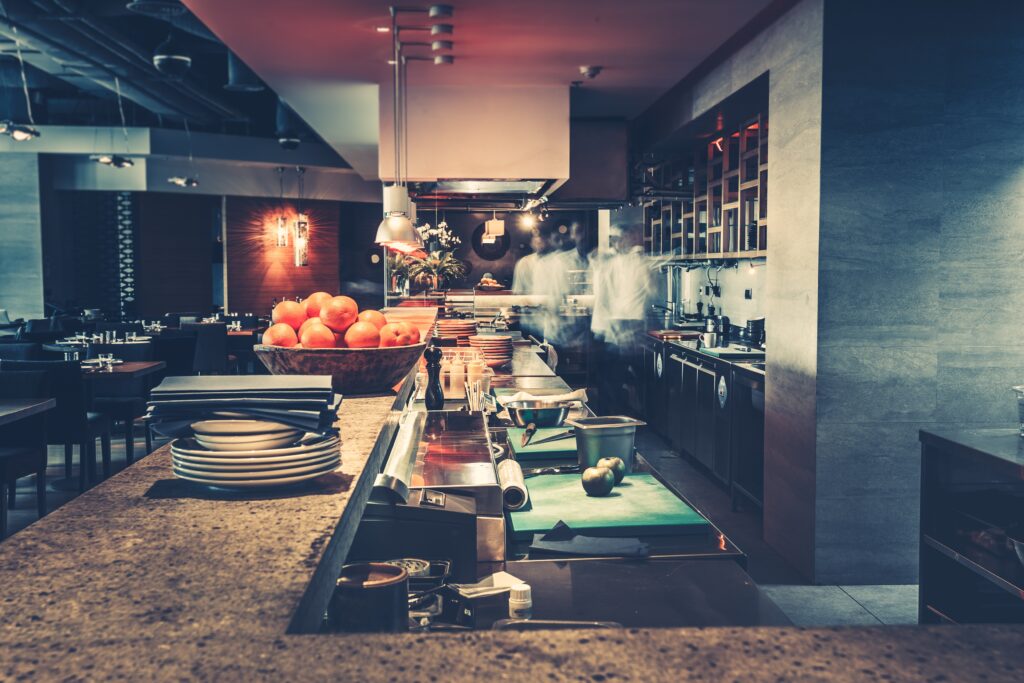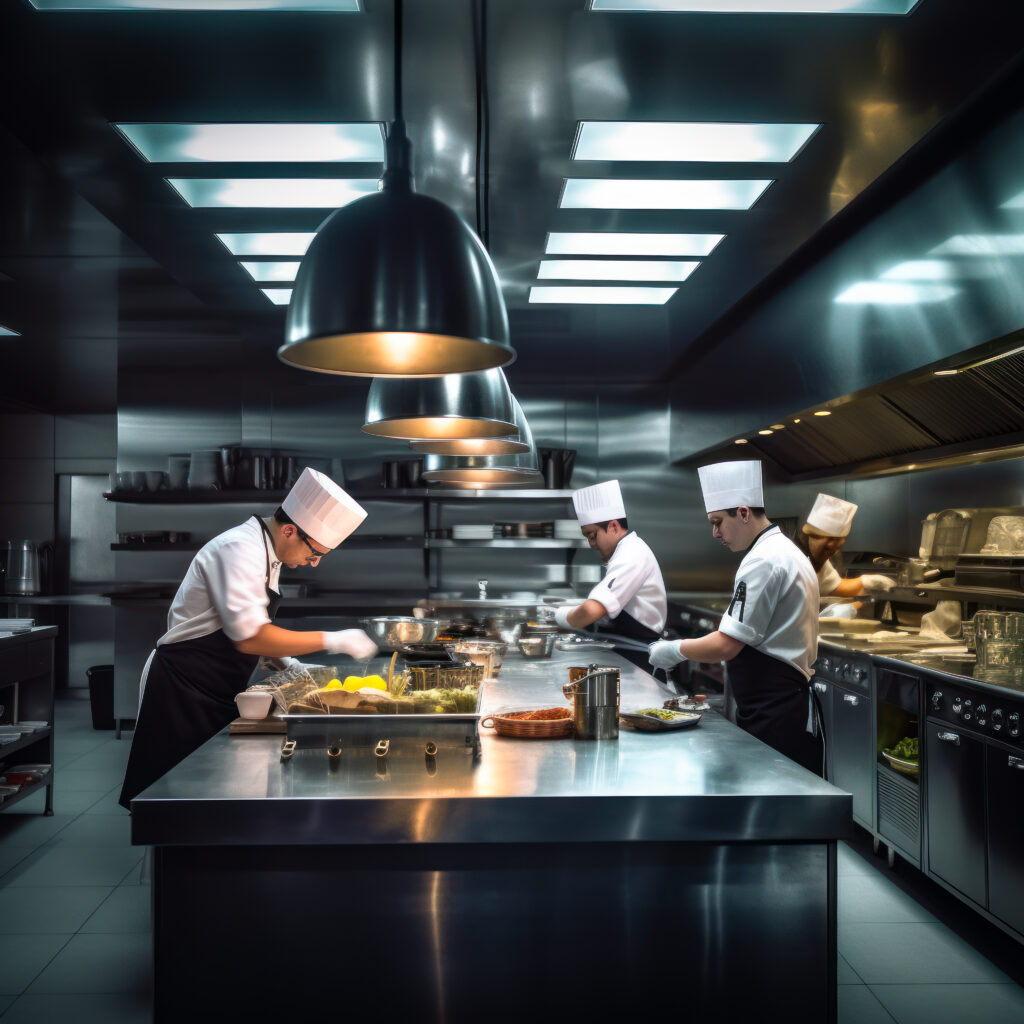Imagine you are a chef, a cook, or a staff member working in a commercial kitchen. You spend hours daily preparing and serving food to customers in various settings, such as restaurants, hotels, cafeterias, catering, or food trucks. You use various equipment, such as stoves, ovens, refrigerators, and dishwashers, to make your job easier and faster. You follow certain rules and regulations to ensure food safety and quality. You also try to create a pleasant and attractive atmosphere for your customers and yourself.
But have you ever wondered how your commercial kitchen came to be? How did it evolve from a simple cooking area to a complex system with state-of-the-art technology? How did it reflect the changes in the food service industry, the customer demands, and the culinary trends over time?
In this article, we will take you on a journey through the history and evolution of commercial kitchen design and technology. We will show you how commercial kitchens have changed over the centuries, from ancient times to the present day.
The Origins of the Commercial Kitchen
The earliest commercial kitchens date back to ancient times, when people cooked food for large groups of people in public places, such as temples, markets, or festivals. These ancient commercial kitchens were usually outdoor or semi-outdoor spaces, where open fires or clay ovens were used to cook food. Cooking was a communal and ceremonial activity that involved offering food to gods, rulers, or guests.

As civilizations developed, commercial kitchens became more sophisticated and specialized. In ancient Greece and Rome, commercial kitchens were found in taverns and inns, where travellers could enjoy food and drinks. In ancient China and India, commercial kitchens were found in tea houses and street stalls, where locals could enjoy snacks and beverages. In medieval Europe, commercial kitchens were found in monasteries and castles, where monks and nobles could enjoy elaborate feasts.
The Industrial Revolution and the Birth of the Modern Commercial Kitchen
The Industrial Revolution in the 18th and 19th centuries brought significant changes to the commercial kitchen. The invention of gas and electricity enabled the development of new appliances, such as stoves, ovens, refrigerators, and dishwashers. These appliances made cooking faster, easier, and more efficient. They also reduced the need for firewood, coal, or ice, which were expensive and scarce resources.
The Industrial Revolution also influenced the design of the commercial kitchen. Factories mass-produced standardized cabinets, countertops, sinks, faucets, and lighting fixtures that could be easily installed in any commercial kitchen. The commercial kitchen became more organized and functional, with dedicated spaces for storage, preparation, cooking, and cleaning. The concept of the “kitchen brigade”, which divides the staff into different roles and responsibilities based on their skills and experience, was introduced by French chef Auguste Escoffier in the late 19th century.
The 20th Century and the Rise of the Designer Commercial Kitchen
The 20th century saw the emergence of the designer commercial kitchen as a reflection of the food service industry’s growth and diversity. The commercial kitchen became more integrated with the dining area, as customers became more interested in seeing and interacting with the chefs and staff. The commercial kitchen also became a focal point for showcasing the restaurant’s concept, cuisine, and quality.

The design of the commercial kitchen was influenced by various artistic movements and trends throughout the century. For example, in the 1950s, stainless steel, chrome accents, and geometric shapes were popular in the commercial kitchen, inspired by modernism and industrialism. In the 1960s and 1970s, earthy tones, natural materials, and organic forms were favoured in the commercial kitchen, reflecting the hippie culture and environmental awareness. In the 1980s and 1990s, bright colours, glossy surfaces, and high-tech gadgets were dominant in the commercial kitchen, reflecting the optimism and innovation of the era.
The 21st Century and Beyond: The Smart Commercial Kitchen
The 21st century has brought new challenges and opportunities to the commercial kitchen. With globalization, urbanization, and digitalization, the food service industry has become more competitive, dynamic, and demanding than ever before. The commercial kitchen has adapted to these changes by becoming more flexible, customizable, and intelligent.
The smart commercial kitchen is equipped with advanced technology that can communicate with other devices via Wi-Fi or Bluetooth. These devices can perform various tasks automatically or remotely, such as adjusting temperature settings, ordering supplies online, tracking inventory levels, monitoring food safety, and even cooking food by themselves.

The smart commercial kitchen is also designed to be more sustainable, energy-efficient, and eco-friendly. It uses renewable sources of energy, such as solar panels or wind turbines, to power its appliances. It also recycles water, waste, and heat, to reduce its environmental impact. The smart commercial kitchen is not only a place for cooking, but also a place for learning, exploring, and enjoying. It can provide interactive experiences, such as virtual reality or augmented reality, that can enhance the staff’s skills and the customer’s satisfaction. It can also create personalized experiences, such as mood lighting or music playlists, that can suit the restaurant’s theme and the customer’s preferences.
If you are looking for a reliable and professional partner to help you with your commercial kitchen design and technology, look no further than HPG Consulting. HPG Consulting can help you create a commercial kitchen that is not only functional and efficient but also stylish and smart. They can help you incorporate the latest trends and technologies in commercial kitchen design and technology, such as smart appliances, sustainable materials, and interactive features. They can also help you optimize your commercial kitchen layout, workflow, equipment, and menu to suit your specific needs and preferences. Don’t miss this opportunity to transform your commercial kitchen into a masterpiece!